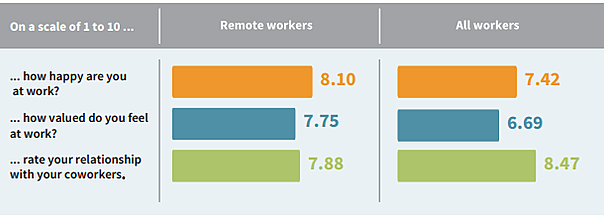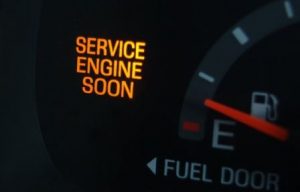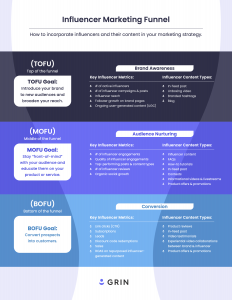How can your agency survive – and even grow – in a time of economic gloom? What can you do to retain clients and cut costs? Find clear answers in this guide.
The stock market is tanking, demand is crashing, and your clients are starting to tighten their belts.
All signs say the same thing: there is an economic downturn on the horizon.
If you’ve been running your agency for a while, you know that ups and downs are a part and parcel of business. Market conditions can change, outside events can affect demand, and sometimes, growth stalls simply due to cyclical reasons.
As a serious business owner, you should perennially be preparing for such inevitable downturns. Even as you marshall resources towards growth, it’s also important to create a contingency plan when things go south.
At the same time, you must structure your agency to be more resilient (or what Nicholas Nassim Taleb calls “antifragile”). A few changes in how you operate can make you more recession-proof.
How?
I’ll share some answers below.
Agencies, Advertising, and Economic Downturns
Agencies don’t do particularly well when economies tank. Marketing is the first casualty when clients see their margins shrink and demand crater. After the 2008 crash, ad spending in the US dropped by 12%.
However, there is substantial research to prove that companies should maintain (or even grow) marketing spend during a recession. Amazon, for instance, grew its sales by 28% during the 2009 Great Recession.
One study of the 1981-82 recession found that companies that advertised aggressively during the period saw their sales grow by 256% by 1985.
This sounds contradictory to conventional wisdom, but downturns are the perfect time to advertise for three reasons:
- Advertising rates drop due to lower demand
- Higher customer mindshare as competitors cut back on spending
- Better brand image since customers see active ads as a sign of corporate stability
If you see an economic downturn approaching, don’t panic – it’s not all doom and gloom. If you can convince your clients to continue marketing, both you and your clients will be better off in the long run.
Having said that, you need a short-term plan to deal with the immediate aftermath of a recession. You also need a long-term strategy to decouple your business from market conditions and become truly “recession-proof”.
How to Survive a Downturn
In an ideal world, your clients will keep spending money judiciously during downturns to win market share from their competitors.
But in the real world, businesses panic and pull funding when they see demand crashing. When that happens, you need a plan in place, as I’ll share below.
1. Evaluate your risk
At the start of every economic downturn, there are three risks you need to evaluate:
A. Recession risk
How confident are you (and economic experts) about a crash? If there will be a downturn, how long and severe will it be?
While this can understandably be tough to predict, it’s important to have some idea of the reality of the crash. There is a world of difference between two quarters of demand crunch vs an epoch-shifting recession (like the 2009 crisis). The severity of your actions will change accordingly.
B. Risk to your business
How well-placed are you to survive an economic downturn? How many months of cash do you have in the bank? What are your payment terms? How much do you owe to lenders? How much do clients/partners owe you?
These are critical questions to answer. Some agencies are recession-proof simply because they have ample cash to survive a crash. I’ll share how to build such agencies later.
Also, evaluate your client roster. Does a single client make up a disproportionately large part of your revenue? In such a case, you need an all-out effort to save this client.
C. Risk to clients
What are the chances that your clients will be affected by the recession? Are your clients localized in a single industry? Or are they spread across multiple sectors? How recession-proof is each sector?
While demand usually falls across the board in an economic downturn, some businesses survive better than others. If you work primarily with doctors, for instance, you might find that demand remains stable (or even goes up) during a recession.
2. Segregate your clients
Some of your clients will pack their bags and leave at the first sign of economic trouble. Some others might stick it out for years.
Step two, thus, is to dig deep through your client roster. You need to consider:
- The client’s risk exposure to the economic downturn
- The client’s importance to your operations and your ability to serve them during the downturn
The latter is particularly important. Sometimes, it’s worth fighting to keep a cornerstone client even at a loss. The bad times don’t last, but losing a critical client can be tough to overcome.
Also consider your ability to serve each client. Clients that can be served completely with cheap resources (in-house or freelance) are easier to retain during a downturn. On the other hand, if a client has razor-thin margins and depends on expensive talent, it might be worth it to cut them off.
Based on these criteria, segregate your clients into the following three categories:
- Immediately departing: These are clients who are most vulnerable to the downturn. They’re also not massively profitable for you. They’ll likely dump you as soon as things go south. In most cases, it’s not worth fighting to retain them.
- Wait and watch: Clients who are going to hurt through the downturn, but are comfortably placed to survive it. They might tighten their belts but won’t dump you completely.
- Comfortably placed: Clients who will take minimal damage from the downturn. Most likely these either have a ton of cash reserves or operate in an unaffected sector. Retaining these clients is crucial for surviving the downturn.
- Value shoppers: These are clients who will use the downturn to renegotiate contracts and bargain for lower rates. Evaluate them on a case-by-case basis. Some of them you might want to dump if it’s too expensive to serve them. With others, it’s okay to renegotiate a lower rate if it means keeping them from going to competitors.
3. Evaluate your services
What kind of services do you offer? Is your work concentrated in “must-have” service areas – say, website maintenance and hosting? Or do you offer a lot of “nice-to-have” services such as branding or social media?
Remember that just as you’re evaluating clients, clients are evaluating their agency partners as well. They will cut anything that isn’t 100% necessary to their operations or doesn’t have a clear ROI.
For instance, AR/VR might be a great branding play when clients have surplus cash. But since these rarely have an immediate ROI, clients will likely cut them in a downturn. If AR/VR design forms a big part of your revenue base, now would be the time to diversify.
As part of your risk analysis, ask the following questions:
- What percentage of your revenue comes from “must-have” services? What percentage comes from “nice-to-have” work?
- Can you prove the ROI of your work beyond vanity metrics?
- How close is your work to the bottom of the funnel? In a downturn, clients will often cut down on top of the funnel marketing. But they will still keep pumping money into bottom of the funnel, revenue-generating leads.
4. Create a plan of action for your top clients
So far, you’ve analyzed your clients, services, and overall risk.
The next step is to create a plan to retain your clients.
Assign top priority in this plan to clients who:
- Form a large percentage of your revenue, and/or
- Are comfortably placed and thus, unlikely to fire you, and/or
- Use must-have, revenue-generating services, and/or
- Are marquee brands that attract other, newer clients.
You’ll have to address each of these clients individually. Find out what their key pain points are and how you can resolve them.
Some steps you can take include:
- Cutting low ROI and low priority work to reduce their total billings
- Going above and beyond to show better work and higher ROI
- Offering discounts
- Renegotiating contracts to earn work that’s closer to the bottom of the funnel (and hence, is harder to cut)
When it comes to your top clients, there are really no limits to what you can and should do to retain them. As we wrote earlier, it costs 5x more to win a new client than to retain existing ones. All your efforts should first be concentrated on making sure that your good clients don’t leave.
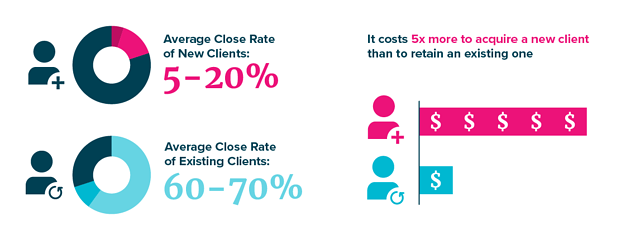
Of course, this doesn’t mean that you can ignore other clients. You should put in as much effort to retain them as well – just on a lower priority basis.
5. Rework your story and services
While economic downturns are mostly about money and margins, they’re also about narratives. “Growth”, “branding”, “prestige” – the words clients love in bull markets give way to words like “ROI” and “savings” in bear markets.
A little-followed tactic, thus, is to rework the narrative around your services. Don’t tell clients about growth and brand equity. Instead, tell them about savings, better ROI, and getting more from less effort.
For example, if you’re selling web design services, you might have two different narratives for different economic situations:
- Growth narrative: Best-in-class, bespoke design services for clients who want nothing but the best
- Savings narrative: Low-cost design services for clients who want more from less
Thus, instead of selling “handcrafted websites”, you might pitch clients “heavily customized WordPress websites”. Since your clients are looking to save, your pitch, too, should focus on keywords like ROI and affordability.
This applies to both new clients and existing ones. With existing clients, sit down with them and show them how you’re changing your services mix to save them money. Use off-the-shelf solutions, more affordable components, and cheaper labor. Your goal is to show these clients that you’re committed to helping them thrive in the downturn.
6. Clean up internally
Agencies can pack on a lot of fat during growth phases. You might hire personnel you don’t really need, buy software that remains underutilized, and adopt inefficient practices.
An economic downturn is the right time to clean up internally and cut down on the flab. This can be tough, especially if you have to let people go.
There are three key areas you need to clean up:
A. Software
Make an inventory of all the tools you currently use. Evaluate their current and average utilization over the last 6-12 months. You’ll often find that there are tools that are used just once or twice a month then sit unused.
Also consider:
- Software contract period (monthly, semi-annually, annually)
- Contract type (per seat basis, flat monthly, usage-based, etc.)
- Penalties for early closure, if any
In an economic downturn, it can be smart to switch to multi-purpose software instead of single-use tools. Workamajig, for instance, can do the work of your accounting, sales CRM, task management, collaboration, and project management tools. This can result in substantial cost savings.
B. Personnel
Salaries are the biggest expenses for every agency. Cutting down on this can be the easiest way to keep your business afloat.
The first thing you need to know is how well you’re currently using your resources. You need to track three metrics to understand it:
- Utilization rate, i.e. the ratio of hours worked to total available hours for each resource
- Realization rate, i.e. the ratio of total billed hours to total available hours for each resource
- Agency utilization rate, i.e. the total utilization rate for all employees divided by the total number of employees
These three metrics tell you:
- How well you’re currently using your resources (utilization rate)
- What percentage of each resource’s time is spent on billable work (realization rate)
For example, if you have three employees with utilization rates of 66%, 86%, and 80% respectively, your agency utilization rate is 77.34%.

In other words, roughly 1/4th of each resource’s time is wasted.
Evaluating your personnel can tell you where you need to cut the flab.
You can learn more about utilization rate and how it affects your profitability in this article.
C. Practices
What’s the biggest expense for agencies outside of salaries?
Office space.
For a modern agency, there is no real need to spend money on extravagant offices. A great deal of agency work can be done remotely. In fact, as we wrote recently, remote workers are happier than their in-house counterparts.
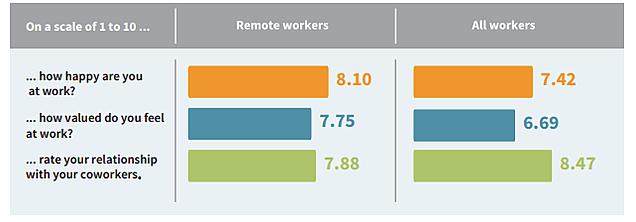
Asking people to show up to the office when they can work just as well remotely is an example of inefficient practices common at agencies. As a downturn looms on the horizon, it’s time to take stock of such practices and find solutions to them.
Ask yourself:
- Does my agency waste time and resources in finding information? Do we have a centralized knowledgebase to keep track of everything?
- Is collaboration a challenge for our employees? Does everyone have access to what they want in a streamlined manner?
- Are we using cutting-edge communication tools? Is our software library up to date?
- Is there something we can change about the way we work to save resources?
Something as small as going digital-only with your documents and using e-signatures can save you a great deal in paper and postal charges.
Consider discarding such practices in a downturn to save costs.
Building a Recession-Proof Business
Surviving and even thriving in a recession is about making tough decisions and judicious cutbacks. You need to go all out to save your best clients. At the same time, you need to realign your practices and make better use of resources.
At the end of the day, building a recession-proof business comes down to building industry-beating expertise, attracting strong clients, and adopting better software and business practices. Tools that give you better visibility into your agency’s operations, such as Workamajig, can help you spot and fix inefficiencies early.
Business & Finance Articles on Business 2 Community
(30)
